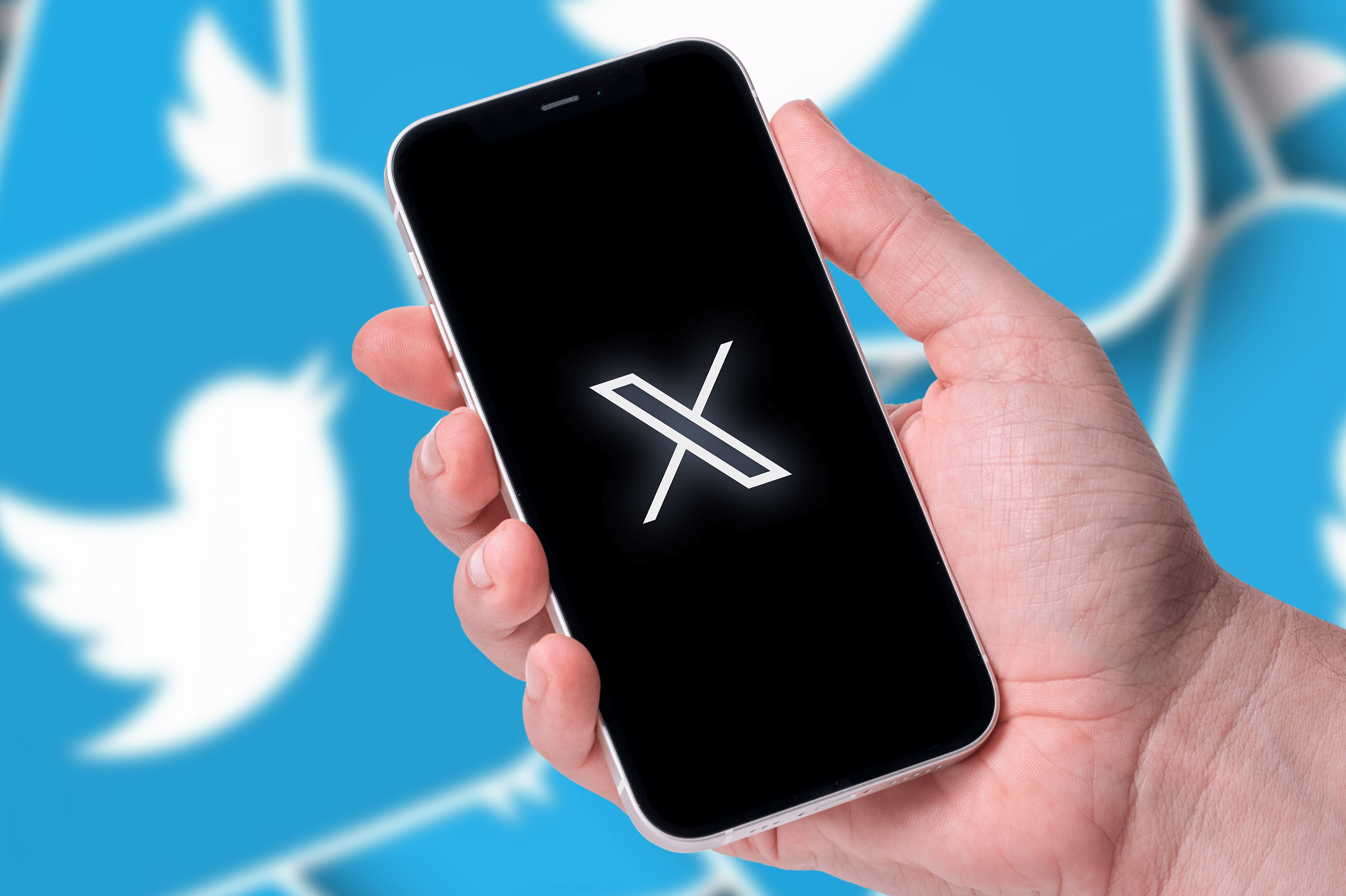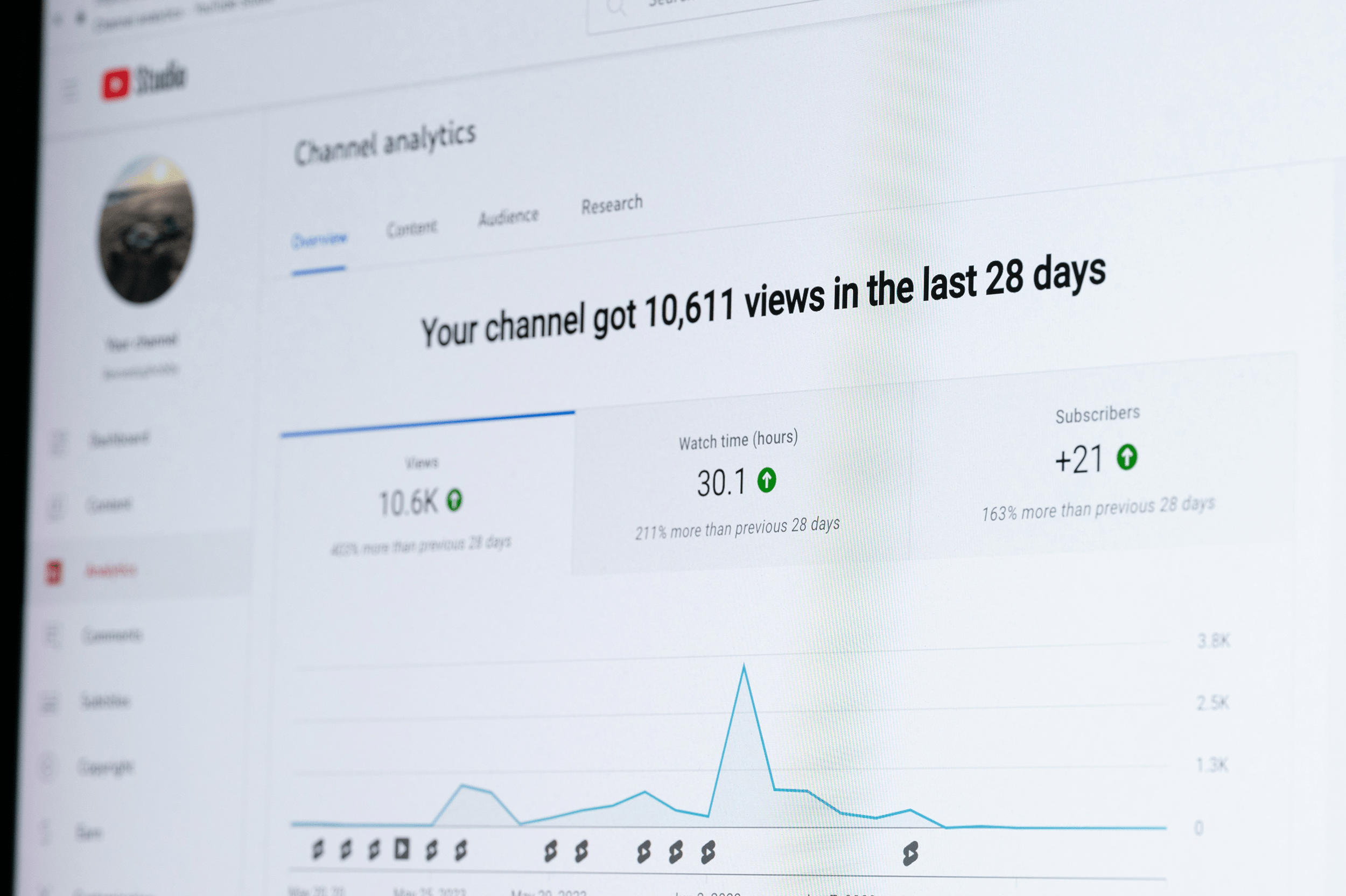As of June 2018, there were nearly 1 billion monthly active users on Instagram. As we write this in early 2019, that number has almost certainly eclipsed the 1B mark – and perhaps, even, climbed exponentially higher.
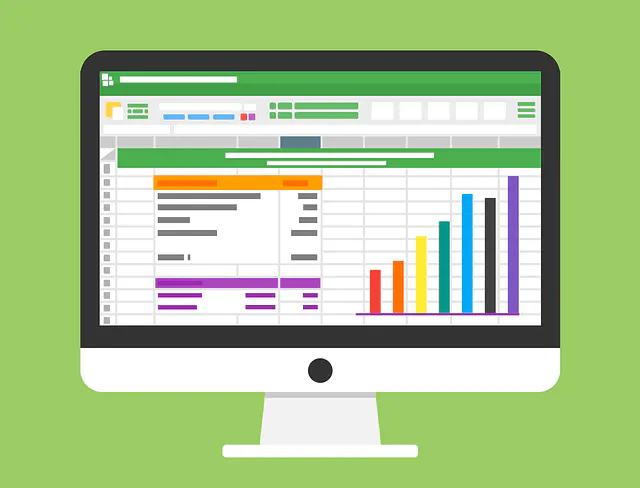
Instagram demographics can help you understand your core audience and how they interact on Instagram.
And so, we have just one question to ask: A/S/L??
Ahh, nostalgia! (We’ll get to that soon, by the way.) How many of you older millennials/Gen Xers remember this from the early chat room days? It’s 1990s – and, to some extent, 2019 – parlance for age/sex/location: the statistical basis for understanding people.
Indeed, if we must distill a person down to mere numbers, demographics is the way to do it. And thus, we get to the meat of it: Instagram demographics and what they mean (and should mean) for your Instagram marketing strategy.
Instagram demographic #1: location
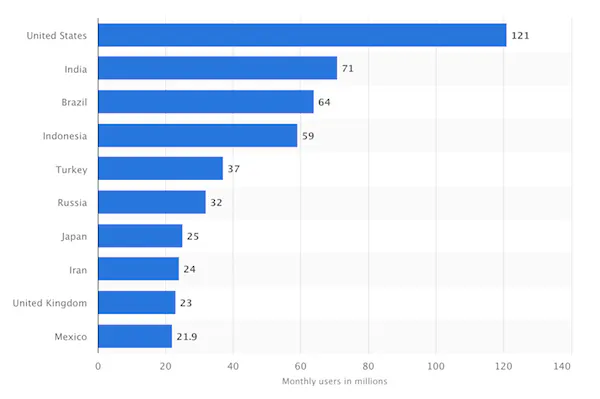 By country, the U.S. accounts for the most Instagram users at about 121 million users (October 2018). However, that’s just around just 12% of all users worldwide.
By country, the U.S. accounts for the most Instagram users at about 121 million users (October 2018). However, that’s just around just 12% of all users worldwide.
In other words, 85% or more of Instagram users reside outside the United States. Here’s the breakdown:
- United States: 121 million users
- India: 71 million users
- Brazil: 64 million users
- Indonesia: 59 million users
- Turkey: 37 million users
- Russia: 32 million users
- Japan: 25 million users
- Iran: 24 million users
- UK: 23 million users
- Mexico: 21.9 million users
In addition to country, you may look to further understand your target Instagram users by city, urban/suburban/rural residence, and other location sub-sets.
Marketing takeaway
There is a huge market both for U.S.-centered brands (121M Instagram users) and brands abroad, and an even greater market for brands that skew global – services, commodities, and even products that offer international delivery. Consider how you can adapt your Instagram marketing to reach your full geographical audience.
Instagram demographic #2: age
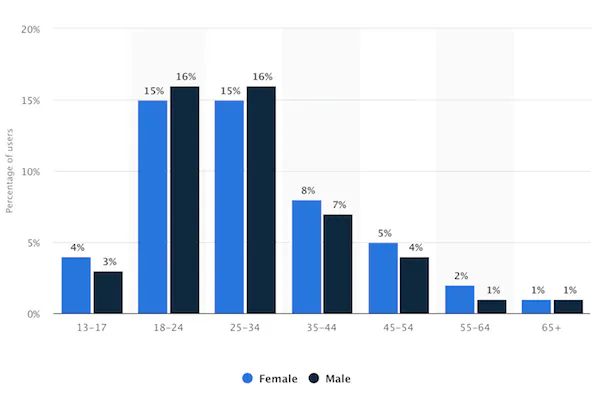 Beyond location, for many brands, one of the most important audience considerations is age. For example, a luxury adults-only travel brand won’t throw its marketing dollars into marketing to the 13-17 subset. As of October 2018, Statista says Instagram users are aged:
Beyond location, for many brands, one of the most important audience considerations is age. For example, a luxury adults-only travel brand won’t throw its marketing dollars into marketing to the 13-17 subset. As of October 2018, Statista says Instagram users are aged:
- Age 13-17: 7%
- Age 18-24: 31%
- Age 25-34: 31%
- Age 35-44: 15%
- Age 45-54: 9%
- Age 55-64: 3%
- Age 65+: 2%
If we extrapolate, we understand there are approximately 310 million Instagram users aged 18-24 and 300 million Instagram users aged 24-34. You can further break down user demographics to suit your audience, for example by Instagram users in the United States.
Marketing takeaway
A powerful 69% of Instagram users are under the age of 35. That’s a huge statistic, if your brand persona is under 35. But, perhaps even more importantly, 31% of Instagram are over 35 – and they’re largely neglected, on a platform long considered to be “for the kids.” So, if your persona is over 35, you’ll be a bigger fish in a smaller sea of marketers. Your Instagram ads and organic Instagram campaigns can really make an impact.
Instagram demographic #3: gender
 Gender is a tough demographic for marketers, in part due to its expanding definition. As of 2019, Instagram displays three options to describe gender upon user sign-up: male, female, and not specified. The even trickier part, though, when it comes to Instagram demographics: Most sources only report on male and female, and leave “not specified” users out.
Gender is a tough demographic for marketers, in part due to its expanding definition. As of 2019, Instagram displays three options to describe gender upon user sign-up: male, female, and not specified. The even trickier part, though, when it comes to Instagram demographics: Most sources only report on male and female, and leave “not specified” users out.
That said, if gender is crucial to your marketing campaigns, the breakdown looks like this: As of October 2018, it’s an almost exact 50/50 split between worldwide Instagram users. What’s more, about 39% of all U.S. women and 30% of U.S. men have an Instagram account.
Marketing takeaway
Diversity rules in today’s world – yes, even the marketing world – and gender is not as clear-cut a marketing demographic as it once was. When you expand your marketing efforts to all gender identities, your audience grows, and you see more success across the board.
(Note: Read more about the biggest mistakes marketers make regarding Instagram analytics.)
Instagram demographic #4: income
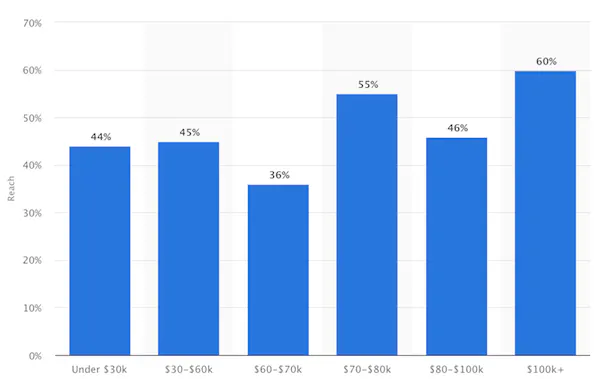 Despite its reputation, Instagram is more than teenagers; this is a vibrant online community, with users who have the cash to splash on your brand. As of January 2018, the percent of U.S. Instagram users, by household income, break down as:
Despite its reputation, Instagram is more than teenagers; this is a vibrant online community, with users who have the cash to splash on your brand. As of January 2018, the percent of U.S. Instagram users, by household income, break down as:
- Less than $30K: 44%
- $40-$60K: 45%
- $60-$70K: 36%
- $70-$80K: 55%
- $80-$100K: 46%
- $100K+: 60%
In other words, 36% of people who report a household income of $60-$70K use Instagram; 60% of members of $100K+ households also use Instagram.
Marketing takeaway
There’s a lot more to Instagram marketing than jumping straight to the highest income group: Dig deep into your personas to uncover how and to whom you should target your campaigns. Sure, you may skew toward higher income groups, or you could find that your niche targets college students and young adults just getting started in life.
Instagram demographic #5: education level
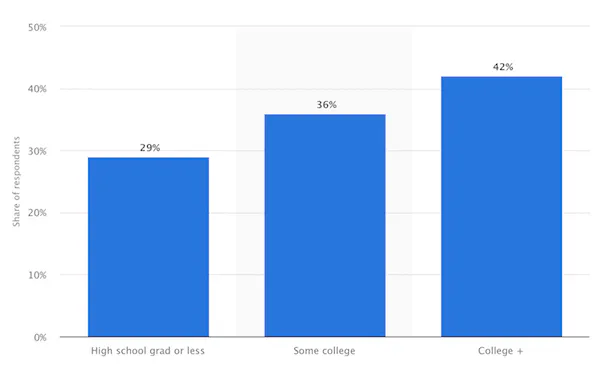 Education – why does that matter? Well, if you’re like a lot of marketers, you understand that education level not only has some influence on (= is not directly proportionate to) income (above), but also creates collective experiences that you can tap into among your users. For example, if your personas went to college, you could integrate the #Immigrad and #studentloan hashtags into your marketing strategy.
Education – why does that matter? Well, if you’re like a lot of marketers, you understand that education level not only has some influence on (= is not directly proportionate to) income (above), but also creates collective experiences that you can tap into among your users. For example, if your personas went to college, you could integrate the #Immigrad and #studentloan hashtags into your marketing strategy.
As of January 2018, this is the educational landscape of Instagram:
- High school grad (or less): 29%
- Some college: 36%
- College+: 42%
Marketing takeaway
Education may not be very important to your marketing – but, it could also be an untapped market. Nostalgia marketing is big and if you can ride that train, do it.
Reach a bigger Instagram audience
Now that you know a thing or two about Instagram demographics and how they apply to your brand, it’s time to get started on marketing to those target personas. You may want to use a specific tactic like Instagram giveaways you can check out our post to learn more about how to create a giveaway caption template.
Beyond that, if you’re looking for even more ideas on how to grow your Instagram following, we’ve also created a series of free Instagram resources, including: our guide to the Instagram caption limit, our guide on how to share on Instagram, and our guide to choosing the perfect Instagram profile picture size.
One key element in reaching them: adding an Instagram follow button to your site – the place where your target audience has actively sought you out. Don’t miss out on this tailor-made audience; pull them over to Instagram!


